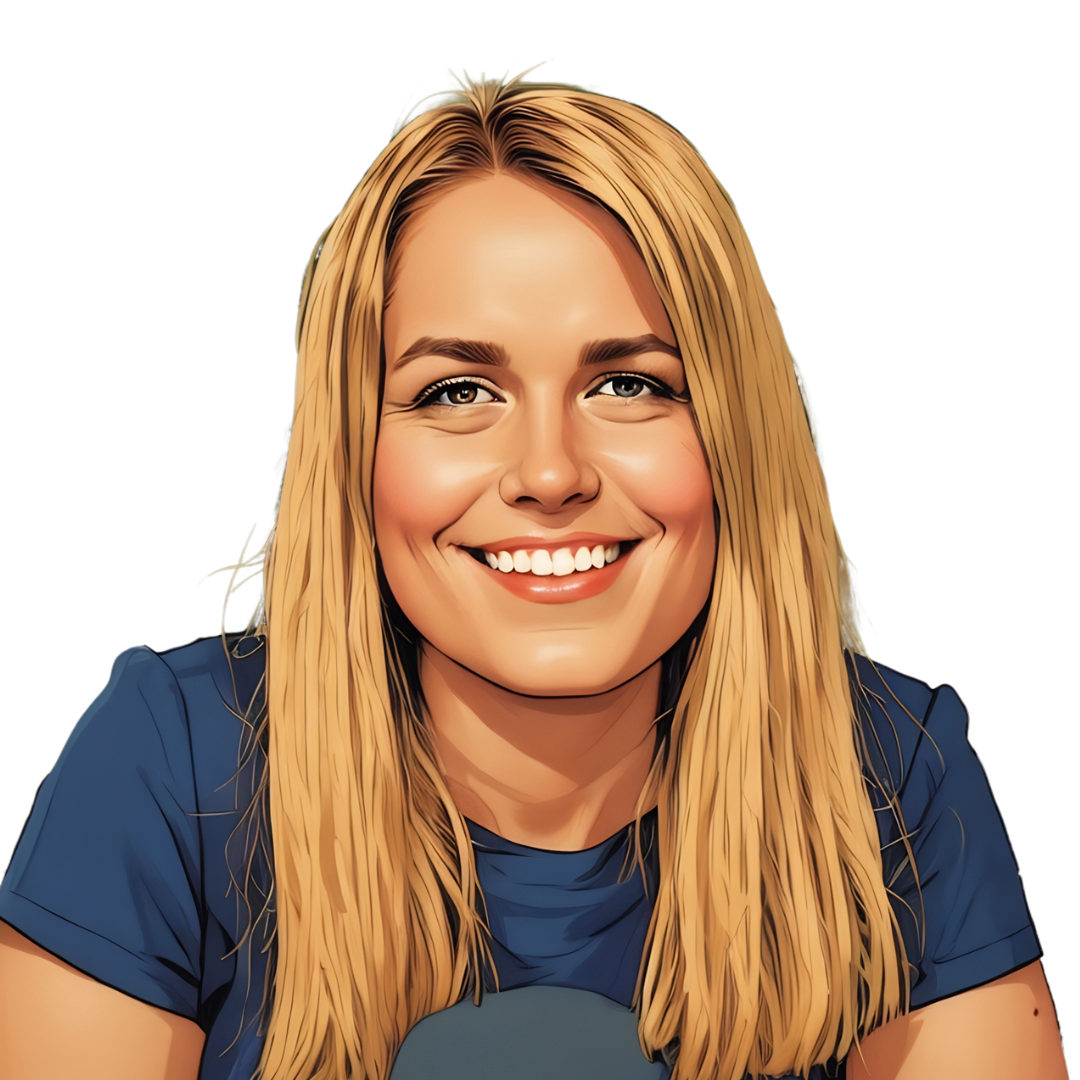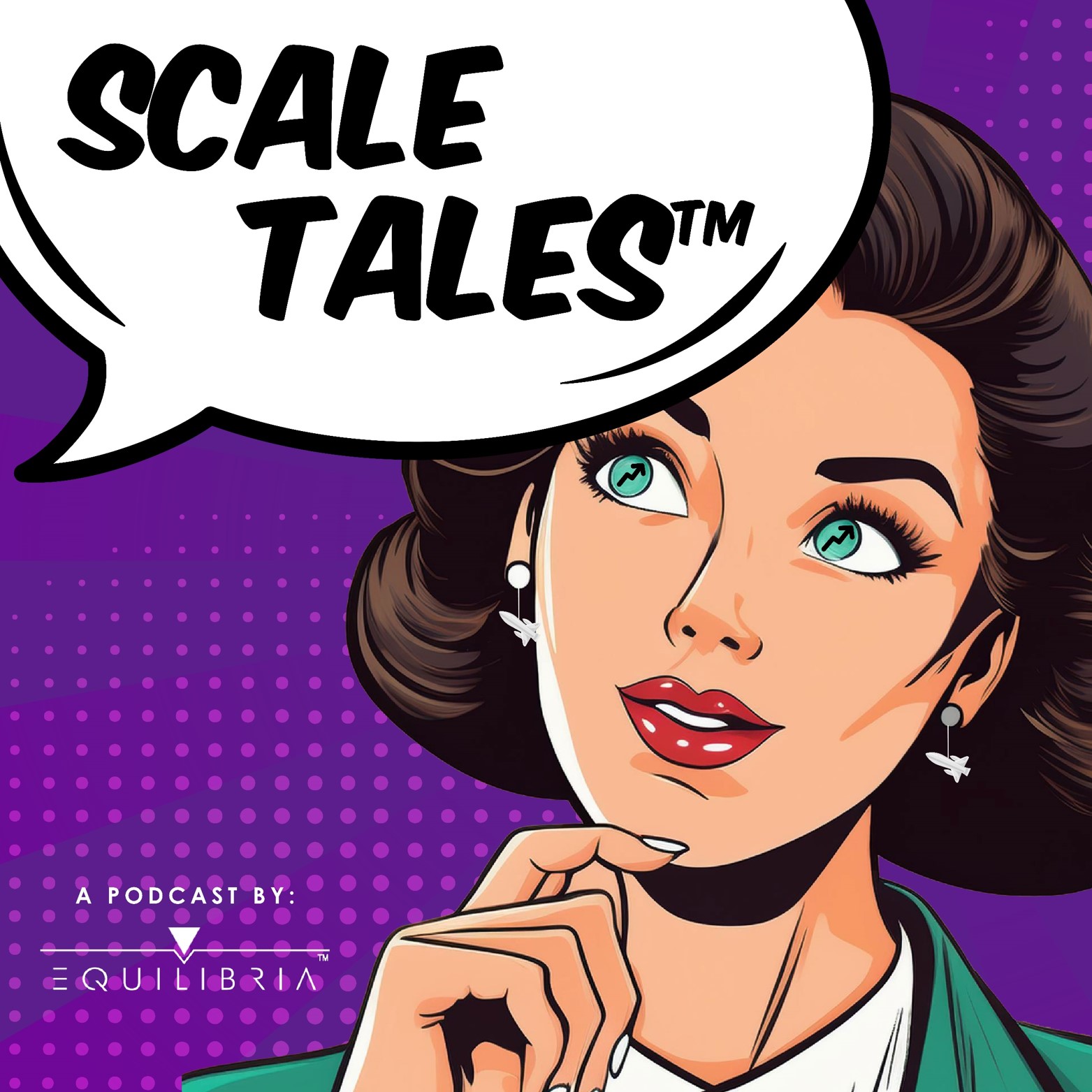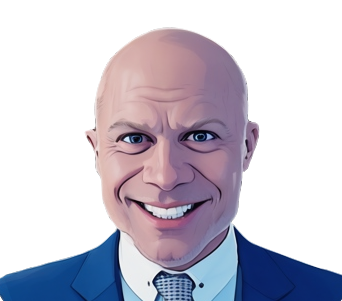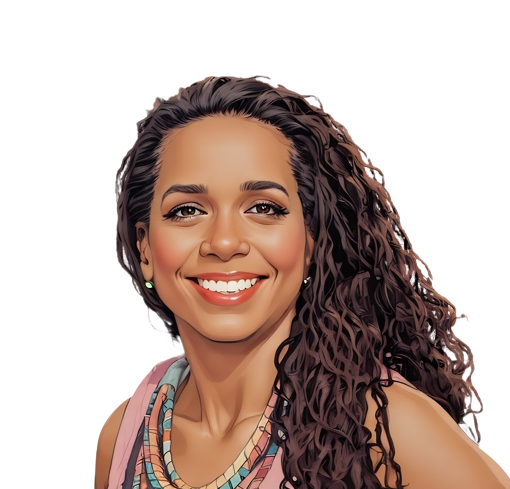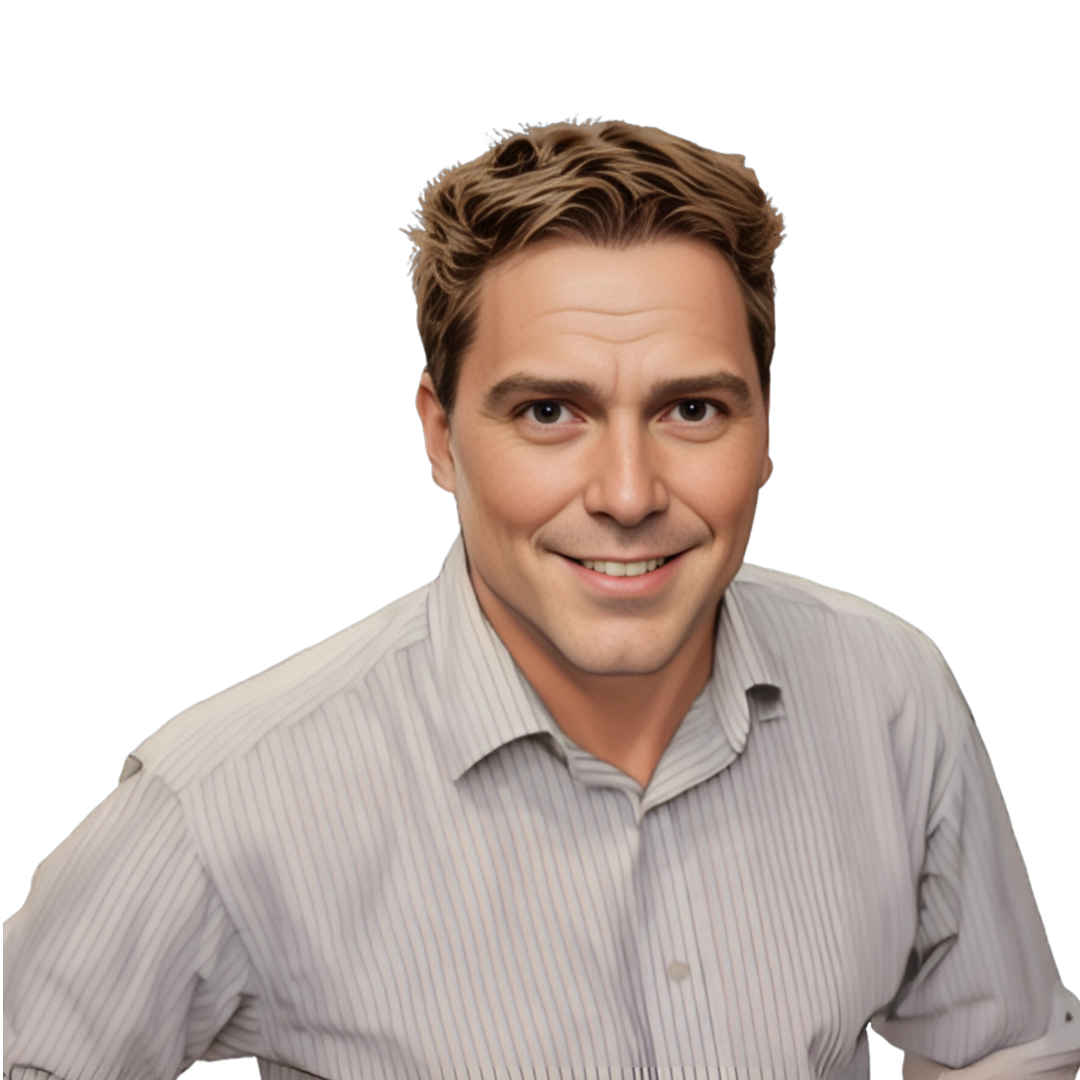Transcript
This podcast is brought to you by Equilibria, Inc. Did you know you can earn PDUs From listening to this show? It’s easy, accessible and submitted directly to PMI. Keep listening to learn more.
Equilibria provides training to assist fast-growing companies to increase capacity and cash flow while operating at maximum performance. As a founder, leader or project manager you know all too well that chaotic work environments aren’t sustainable. Visit EQBsystems.com to sign up for a free discovery call and start flowing today! EQBsystems.com.

Welcome to Scale Tales – the business storytelling podcast where entrepreneurs, executives and experts share firsthand accounts of those magical moments when they achieved something bigger than even they could have imagined.
Wildfires, mass shootings, assassinations, war, unprecedented tariffs, bombs dropping…conflict is all around us and 2025 isn’t over yet. The impact of these types of events is far reaching. It begs the question, how can you scale in the midst of adversity and crisis?
I’m Alicia Butler Pierre, your guide for what will be an interesting, and at times bold and daring conversation on a topic that, depending on who you ask, is taboo. That topic is the center of our next guest’s business, a business whose core offering was unceremoniously declared illegal at the beginning of 2025. It’s led to a 100% drop in her business. Oh yeah, brace yourself. This is a story of passion, purpose, and persistence despite the odds.
This is Ep. 44: How Julie Kratz Impacted the Work Performance of Over 10,000 People Through Her Allyship Programs, And Almost Lost It All.
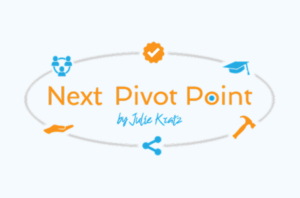
Hello, I’m Julie Kratz, professor at Indiana University and CEO at Next Pivot Point. I’m currently in Bloomington, Indiana. And this is my scale tale.
So it all started about 10 years ago when I decided to start my business focused on diversity, equity and inclusion through the lens of allyship. I had spent 12 years in corporate America myself, mostly as a people leader, but I never quite saw myself reflected in most of the organizations, most of the industries that I was a part of. So agriculture, financial services, construction, very much used to being the only woman on most of the teams.
And through that kind of elusive feeling that I didn’t quite belong or didn’t quite fit in, I started my own business focused on allyship. I’ve done a lot of research over the last 10 years on what it takes to be an ally in the workplace, what it takes for folks to feel seen, for them to feel heard and feel a sense of belonging. really proud that we get to facilitate these experiences so that people can kind of learn how.
The number one question I get is,
“Well, of course I want to be an ally, of course I want to be an inclusive leader. But what does that look like for me? What is something I should do?”
And it’s very much a choose-your-own-adventure-approach. There is no script, there is no step-by-step process. I, over the years, have tried to create practices and train on those practices.
And what I found is there’s a certain set of tools that really once activated inside an organization and there’s accountability and there is room to practice and room to make mistakes with it. That’s where it really flourishes. So the case study I wanted to share with you all today is the work that I’ve gotten to do with Amazon. Despite maybe what you see in the news cycle, they very much remain committed to inclusion. And we’ve had the opportunity to do more of like a cohort approach with them on their allyship programs. And that’s something I’ve really enjoyed doing.
We started working with one leadership team inside the organization and how it worked is we did a pre-assessment. Based on the skills that we had kind of mapped out that we were going to provide training and curriculum for, we did a pre check to say, “Okay, what’s your knowledge level on things like cultural intelligence, inclusive language, microaggressions, how to detect bias?” That was kind of the basket of skills that we had pre-selected for them.
We assessed them on their level of knowledge, ability to practice, and confidence on those skills at the beginning and then at the end of the program. As the program kind of evolved, we took deep dives into these skill sets every few weeks. And what I think was really interesting about the experience is that leaders got to get a taste of a skill, go back to their work team and practice using that skill and then unpack that in our live sessions and use that more as like coaching time for, Hey, this is what worked for me. Here’s what didn’t work for me. Here’s an issue I’m having kind of that nice, like vulnerable, empathetic place to learn and share with one another.
Over the course of several months with that original program, we saw some tremendous application. We saw people really trying to use the tools and talk with their teams about what they were learning as a leader, which I always think is really a great best practice. Give the folks a window into your journey. And at the conclusion, the leader of the team said,
“This was so valuable. I want our leaders, the folks, kind of in the next level of the organization. I want them to also be able to access this program.”
And so that is always fun to see as a trainer that you find value and so you want to share that with other folks. Now, over the course of the last year and a half, almost two years since we kicked off the original program, we’ve had the opportunity to kick off four additional cohorts. So that has kind of been a nice land and expand opportunity, not just one group inside a company practicing inclusive language and detecting bias and things like that. But when you have your community, the folks that you work around also practicing those skills, it enhances accountability, it enhances psychological safety, the ability to kind of speak up about hard things.
To date, we have 200 leaders that have come through the program and what they’re telling us, because we have done those pre and post knowledge, confidence, ability to practice tests or assessments with them, what they’re telling us is that they’re getting kind of like a 20, 30% lift in their ability to practice using these skills as a result of the program. That’s something that I’m really proud of. You don’t always get to see those results with folks. Inclusive leadership is a journey. I always say there’s no destination, it’s murky.
I used to say it was like dancing in the dark, but I don’t know if anybody wants to really dance in the dark. It does kind of feel like you’re fumbling around and you’re doing it right. You will get it wrong in some ways. And so that has been a tremendous, tremendous program. And since then, I’ve had the opportunity to come teach at Indiana University to their Kelley School of Business. So I’m actually leveraging a lot of the learnings from my clients like Amazon over the years to teach decision making. So my journey as a trainer is evolving.
Not only is Julie’s journey as a trainer evolving from consultant to professor interesting, but, as you’ll soon discover, her entire career is one of evolution. Notice I’m being careful to not use the word, “change.” Change is uncomfortable, jarring, and sometimes downright scary. And many are resistant to it, despite its inevitability. However, if you accept evolution and growth because of that evolution, it can leave you, like Julie, open to new ideas and experiences.
I think the thing is just to always stay curious, always want to learn more. It’s harder as we get older to kind of tap into that curiosity. How do I know that’s true? Based on what information? Because we kind of have to detect our own lies from time to time, the stories we tell ourselves that aren’t always true. So, super excited about teaching young people, young leaders at the Kelley School about decision making and inclusive leadership. That’s where I’m at now, just kind of figuring out what the future holds for diversity, equity and inclusion.
As you can imagine, it’s been under fire lately, really for the last several years. And what people ask me is,
“Oh, wow, what’s that like right now?
Well, I’m finding that the words, the branding is shifting, the packaging is shifting, people are a lot quieter about the work, but the work very much still persists, it still continues. And so we’re finding a lot of our clients are kind of quietly embedding inclusion programs into their culture.
Like Amazon – you might have seen them in the news, but they are very much still utilizing these programs as well as many industry leading organizations. So I work with a number of financial institutions on an ongoing basis and they’re telling me that this is shifting to things that we do inside culture or areas of our organization, like belonging or inclusion. But it’s very much the same work that continues.
And so what I want to see organizations do more of is kind of what the Amazon case study I shared with you is about, is to really embed these practices into your existing leadership curriculum, to look at systemic effects of bias in your hiring process, your recruiting processes, your promotion processes, your pay management processes.
Sadly, there’s a disproportionate effect that people feel in the workplace based on elements of their identity they absolutely have no control over. We know that women still make about 82 cents on the dollar compared to their male counterparts that are doing similar work. That number is worse for intersectional identities like women of color, folks with disabilities, folks in the neurodivergent community. And so thinking about how during these trying times, how can we do some of the important work that’s maybe less appealing?
People aren’t making proclamations about their pay equity data necessarily, but I do think now is the time to do some cleanup work quietly, making sure that when we are kind of ready to be more public about this important work that we’ve done, some of the systemic pieces that are really critical but not always the fun things to talk about. And so that’s what I see in the future. It’s definitely going to be hard for a while. I find myself quite lucky to be able to teach at university during these trying times.
A trying time indeed. After all, I first experienced what was most recently known as DEI or Diversity, Equity, and Inclusion training when I worked as a young engineer over 25 years ago. The issues of equal pay for equal work and creating hostile-free work environments were a reality then as they are now. These issues seem to persist in many parts of the world despite the renaming (or “repackaging” as Julie described it) of the work to combat them.
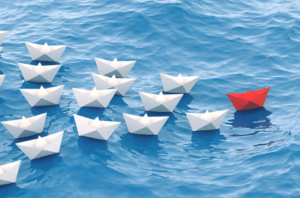
And, you know, there’s some grief I think a lot of us are feeling in the last 10 years. For me, building something that has seen 100% drop in business this year, and having to let go of my team members and move my family and things like that, because sadly, we’re in an administration that doesn’t understand the work that we do, and sometimes we fear what we don’t understand. So I think this is a great moment to land and expand and continue to work on awareness, but really to tackle some of the deeper systemic issues.
And I know for many of us practitioners that might be looking for other work or, you know, having to do kind of side hustles or other things that had to be creative during these times, I know that we’ll find our way through this, because the thing that gives me tremendous hope is facts, as long as we have access to actual information. in all seriousness, diversity is a fact. We work in a global environment. Companies are telling me,
“I do business in Europe and Asia and Africa. Why wouldn’t I want to know about cultural intelligence, the ability to work with people from different cultures, that’s going to hinder my ability to do business with people.”
And that’s really what we’re talking about, is folks have differences. We’re all different. And here in the United States, if you look at the labor force and the labor market and the anticipated labor shortages that we will have in the next five years, by 2030, Gen Z will be much larger part of our workforce.
Baby boomers will largely be retired or hitting peak retirement years these next few years. Millennials and Gen X will be leaders. And so with that generational mix, Gen Z is unwavering on issues of diversity and inclusion. 83% of them say that they look at that when deciding to apply for a job. So if you’re not doing this work, I don’t know how you’re going to appeal to future employees and future customer base. You risk being irrelevant. Also, Gen Z has no majority race. And so it very much is a multicultural, multiracial, multiethnic, all the things.
A very high percentage of LGBTQ. One in five are neurodivergent. One in four folks in general have disabilities. So I could go on with all the stats, but just to say diversity is a fact and we know that inclusion is the path forward. And so if we’re not taking a hard look at the reality of the generational mix in the workplace and what it is absolutely going to look like, we have data on this and we’re not going to have enough employees to do the jobs that we need to do because our birth rate is down.
So, all that to say just in a few years, the Runway is very short. Your ability to kind of stay with the status quo or to hire the very same types of people from the same types of organizations or industries or colleges, it’s just not going to work in the long term. I think about this as a long game. One of my coaches, Dorie Clark, has a book, The Long Game. And I’m really kind of searching deep on that right now because short term we are absolutely suffering, we are hurting. But long term, there is absolutely a path forward.
And that path forward involves, yes you probably guessed it, evolution! Considering Julie’s career path, I’m confident she’ll figure out her next pivot point as she continues a forward path. But before we go forward, let’s go back in time because in order to really understand Julie’s perspective and optimism, you need to know the story behind her scale tale. Her educational background isn’t in H.R. It’s actually in marketing.
Yeah. It’s funny being back at the Kelley School where I studied marketing, it’s…I don’t know if I could teach marketing anymore. But I mean, I have done marketing in my own business the last 10 years, so I have used DID and honestly it’s, it’s like all the business curriculum that you learn, you know, accounting, how to read boring
financial statements, all that stuff has been nice to have that background. But yeah, it’s, I call them pivot points. Of course my business name Next Pivot Point.
But seriously, in my career, there were just lots of pivot points. Probably every three to four years I would like look around and be like, I need to do something different. And marketing was always the thread that I wanted to go back to. But I never quite found myself in an actual marketing role.
I didn’t really get to pick where I went. It was usually picked for me, usually by an ally. And usually it was a tough situation I had to figure out. So probably the skill that I learned most that using an actual corporate roles was problem solving and decision making. Which is kind of ironic that that’s what I’m teaching now. I think I was in a marketing role for maybe nine months one time and then I did sales, which that’s not really marketing, but I never actually did it. But think I’d say with the DEI thinking about branding and packaging changing, I mean, that’s what we’re going through as an industry right now. So I can kind of make that bridge. But I also don’t know what the future has in store for us.
Wouldn’t that be nice? To know what the future held in store for yourself, your business, your career, your family, your country…no matter what happens one thing is certain – in an age of rapid digitization, machines encroaching on jobs, and ongoing political unrest – a pivot will be required. The question we should all ask ourselves is, when that time comes, will we be willing to make that pivot?
Are you a certified Project Management Professional? Just imagine, you can literally listen and learn while you earn credits. Yes, even while you’re taking a long walk, driving to or from work, even while you’re on an airplane. The good thing about our podcast episodes is that you don’t have to watch them in order to earn your PDUs.
In three easysteps – Visit ScaleTalesPodcast.com, sign up for a membership, take a short quiz and we’ll submit your credits to PMI. Yes, it’s really that simple and all at a price that makes this information accessible wherever you are. No gimmicks, no games. It’s really that simple! ScaleTalesPodcast.com.
Welcome back! Before the break you met Julie Kratz, the CEO of Next Pivot Point and an allyship consultant turned professor with an educational background in marketing. She shared recent success she’s had in training and implementing an allyship program with Amazon. This success came despite the legal pressure to disband programs like this. But the demand for the work persists.
Now, she will share exactly how her allyship program works, how many people she’s impacted through her work, and resources where you can learn more about how to do something similar in your organization. We’ll even tell you how you can watch a detailed infomercial of her program.
But first, I’m curious (as I’m sure you are), what’s Julie’s next pivot? How will she leverage her past experiences and marketing background to pivot? What does repackaging or rebranding DEI look like?
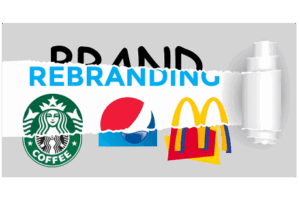
So a couple things – DEI is relatively new as a term, so really, in 2020, it got popularized. Before that, I and other practitioners were calling it diversity and inclusion which, I know why E is important, and I’m not suggesting we drop it, but I think diversity inclusion was less triggering for folks. We know when you unpack the acronym and say diversity, equity and inclusion, people are more receptive than they are when you say DEI.
It’s just like CRT. Critical Race theory sounds so scary to people when you use the acronym because they don’t understand it even before diversity and inclusion, when I first started doing this work, we just called it diversity, which that was a disservice. Right? So it’s, it’s evolved in, like the last 10 years. I’ve seen it change three times. So I’m kind of indifferent on it. Whatever we call it in the future, the acronym has obviously just been completely…the perception is just too negative to continue using it. So I took DEI off my website and just relabeled everything.
Now, allyship and inclusion is always how I’ve talked about the work, so I felt like that was genuine and not, you know, escaping and opportunistic. I was really concerned about that because of the legal perception. DI is absolutely 99% legal. Hiring quotas and things like that, I think got mixed in the fray. That’s the only thing I can really cite. That and exclusive training just to certain people. Those were the two things that I think some practitioners did or some organizations did.
I never participated in things like that, so I can’t really elaborate on that. But we know that almost all the work is absolutely legal. But the perception of it being legal is what we’re. You know, the government has not even defined what DEI is, on purpose because if you don’t define it, we can’t defend it. And so, yes, most practitioners I’m talking to have run out of cash at this point.
And this is what has led to Julie’s next pivot point.
I had enough cash to pay my team through May, and then ultimately had to let my team go. And then now with the move and working full time at the university, I just don’t have the same capacity to take on new clients. So I’ve not been as intentional with my sales process. My business, according to QuickBooks, is down 100% this year, which even to be able to muster the sales that we’ve been able to get this year, I’m actually pretty proud of because it’s been, I mean, very depressing sales calls, like, just more like therapy. And you can’t help people because they don’t have budget, they don’t have resources, and just a really sad, dark time.
But we’re finding our way through it. It. And we will get through it. Something will change, something will shift. Because again, I just go back to demographics, like, y’all are kidding yourselves. It’s gonna happen.
I thought it was interesting that Julie mentioned that the current administration of the U.S. Government has not defined DEI. So, I researched this myself by going straight to the source – The White House of the U.S. I read the Executive Order that President Trump signed on January 20, 2025 that effectively made DEI programs throughout the federal government illegal. Sure enough, it does not explicitly define what DEI is but mentions that these types of programs be replaced with those based on merit.
There is an article on the U.S. Federal Register’s website that defines DEI, but that’s from 2021 during the previous Biden Administration. Keep in mind, I’m not an expert in these matters but this is what my quick research on official government websites yielded. We’ll have a link to this as well in the show notes.
Definition or not, this really has me curious – what does allyship mean, particularly in the workplace?
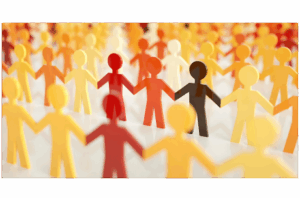
I’m kind of facetious about it. I don’t like to define it for people. You need to decide. But I, I do kind of preface it as supporting someone that’s different from yourself. So it can be an individual act, it can be a more systemic act, but in nature, it’s just being supportive of somebody that’s different. Different lived experience, different identity, different culture, different background, different industry. I mean, this is the thing with allyship and DEI too.
The attention was so hyper focused on race and gender. And yes, those are two huge elements of identity. And historically marginalized groups sit in those groups. But when we brought in the definition of diversity and people in more dominant group identities can see themselves like, age is a great example. Right. We talked about generations. Disability affects a lot of folks.
I have had some really great allies come to the conversation that have said,
“I have a hearing loss. And until I thought about it, my disability, I didn’t realize that that could be a path for me to be an ally for others that also experience differences in the workplace.”
So we really need these light bulb moments, like, come on over here, stop being so scared, can be an ally with us.
But how do you get others to grapple with the fear of the unknown? As a founder, leader, or even project manager, this is something you’re likely faced with often. Knowing that Julie teaches a university-level course on decision making, I couldn’t help but ask – how do you move on when your life’s work is threatened with the stroke of a pen?
It’s not easy. I’m still going through it. I am seeing a grief counselor. So it is a very real thing, the grief of believing in something, building a business around something, just supporting something that you thought would always be there. And when it fades away, there’s just a, a really hard emotional process that you go through. So my advice would be, give yourself the space to grieve. You can’t pre-grieve in a way.
You can’t force yourself through it. You can’t just pivot. So for me, this has been almost a year’s journey of trying to figure out what you can do when you’re forced into these constraints. And this is always going to happen in any industry. There’s going to be constraints that come along, ups and downs. And so I tried to tell myself that you’ve been on the roller coaster ride for 10 years, you’ve seen things before, but this is pretty unprecedented. We haven’t seen this type of significant pushback and unnecessary legal challenges, in my opinion.
For me, I’ve had to really cut back on my capacity. I don’t do a lot of sales outreach anymore like I used to, because if somebody wants to do this work, they’re not waiting for somebody to send them a LinkedIn message asking them about their work. They’re probably figuring it out or looking for resources proactively. So that’s something that’s really shifted the sales process and then really focusing on my new book, which is affectionately titled, We Want You – An Allyship Guide for People with Power.
And that was something that birthed again out of the election like, whoa, we missed a huge demographic that seemed to resist a woman leader. And so I got really curious and went back to my original book, One – How Male Allies Support Women for Gender Equality, which I wrote in 2017 and coincidentally came out the day that the #MeToo movement hashtag took off and went viral, although it had been around for a long time.
My strategy that I’m offering is to engage people with power in this conversation. We’re getting nowhere quick without people that make decisions and have budgets and resources inside companies. We can only get so far without them.
And here’s where your bridge building skills come into play because, frankly, the people in positions of power are the ones who can make things happen by codifying things like allyship into laws, policies, processes, and procedures.
Not sure how to implement bridge building? Well, that’s where Julie’s books can offer strategies.
In my research, I found about 70% of C-suite leaders are very fearful about the conversation around DEI, especially when it’s packaged at DEI. If you didn’t feel like DEI books were written for you, probably right. We kind of assumed that they were on board, but they’re not. And there’s fears you need to unpack, there’s power structures you need to think about. There’s a What’s in it for me? There’s a cascade of immense benefits.
Like happiness is highly correlated with relationships, AKA allyship. And then how to lead your team inclusively. Things like psychological safety, storytelling techniques, knowing your ally role and then last the book ends with organizational techniques. So the less fun part of DEI but inclusive policies, these are things that we can be doing this is a smart time to be doing that work. Proactive pipeline development. For all the things I told you about Gen Z and then starting the conversation earlier, that’s another big miss in DEI.
We don’t start talking about it until your brain’s fully developed and your biases are all in there. Talking to people in their 40s like me. Not the right time to start talking. When I talk to my 11-year-old about these issues she has a much more robust take on it than I’m sure did because we didn’t talk about these things when I was a kid. So another reason to be hopeful for the future.
Speaking of the future and those eye-opening stats Julie mentioned earlier about generational differences in the workplace, I asked if she could shed light on the intersection of the future of work and allyship.
I’ve written about Gen Z a lot. The future of work conversation, I don’t know, it’s so much focused on AI. So I’m actually writing an article that we’re pitching to Harvard Business Review, on the intersection of AI. Like, what AI can learn from the rise and fall of DEI. Not fall, but the hype cycle of DEI. So, yeah, I’m kind of taking it in different angles.
Future of work conversations were really popular because of the pandemic. We were kind of reinventing the workplace. So I did do a bunch of research and writing about it back then, but Gen Z is kind of the drumbeat I’ve been hitting. Because this is tricky when you remind people about the diversity. It scares people that don’t see themselves as a part of that too. So we know this can be very triggering and it was one of the reasons why we’ve kind of gotten into this mess that it triggers white people to think, I’m not going to be the racial majority. Which is just silly because race is a construct and it’s a pigment of your melanin in your skin. It’s just so silly that people are so triggered by that.
But it is a very real social construct that we’ve developed in a hierarchy where people see themselves in a certain spot and they don’t want to lose their spot. So it’s a little tricky how to navigate that. If you look at the pie chart, ethnicity and race by Gen Z, it’s so different than previous generations and gender fluidity, disability, neurodivergence, high rates of autism, ADHD, PhD. So we’re gonna have to figure this out.
And if people want to keep punting further and further along, at some point it’s going to hit you. I want to work with proactive business leaders that want to be prepared in five years instead of waiting for a crisis to happen. I can’t hire anybody. You don’t have enough people to do the jobs. That is going to be something that people say in a few years time. AI cannot replace all of our jobs. And that’s just the reality.
One reason why some leaders may push back on being proactive about the changes in the makeup of their workforce is the metrics. How do you measure something like allyship and its impact on the bottom line? This brings us to how Julie’s allyship in the workplace program in companies like Amazon actually works.
I alluded to this. A pre- and post-check. So most learning practitioners use kind of like three baskets. And self-assessments are flawed because people aren’t super self-aware. But it’s the data we have available. Learning is very difficult to measure an ROI on. So knowledge level before the workshops and then after on specific topics that we trained. So cultural intelligence, understanding bias, et cetera, and then ability to practice.
How much do you use the skill pre and post and then confidence. What’s your confidence level before and after using these skills? So we know you have to have the knowledge, you have to have the confidence, and you have to have the ability to actually do it. Learning doesn’t happen in a vacuum. It happens through application. So those three things I find to be really helpful metrics for evaluating the effectiveness of training programs.
And how long does a typical cohort last?
Usually three to four months. It kind of depends on the client and what else they have going on. So if they’re doing a number of other things, we might do it less regularly. But if this is like their main training for the year, three or four months is a good snapshot. Six months for individualized coaching to see the results. So kind of just depends on their time frame and what else they have going on.
I didn’t mention this earlier, but Julie’s client list reads like a who’s who of large companies. Not only has she worked with Amazon, but also Trip Advisor, Hitachi, and Fast Company. So, just how many people has her work through Next Pivot Point impacted over the past 10 years?
Yeah, we’ve tried to total that up over the years, but it’s just wild because you can’t always garner what that might be. If I had to guess for 10 years of just actual speaking time, actual consulting time, actual training time, it probably is over 10,000. If I were to estimate somewhere between 10 and 20, which is kind of fun to think about lives impacted by this work. And then I’m lucky I have over 40,000 followers on LinkedIn and have my Forbes column and podcast and other avenues to reach people less directly. But as far as, like, direct impact, it’s probably in the tens of thousands, which is exciting. Some good legacy.
Julie has also reached people through her TEDx talk. Regarding her podcast…
My podcast, I’ve had for eight years. It’s called Allyship in Action.
And I really get such a kick out of it. I get to interview guests from all over the world, leading researchers, people that have written books that I’m impacted by. So it’s just been such a blessing to be able to have that platform to share. And then I usually write a Forbes article from the culmination of interviews as well.
I have so many free resources at nextpivotpoint.com there I would point you to on our homepage right now we have a call out for the new book that I mentioned, We Want You – An Allyship Guide for People With Power. Highly recommend. There’s a workbook that goes along with it that you can download on the site. There’s links to all my articles and podcasts and just would love for you to be an early reader and supporter of the work.
And you can become an early reader and supporter by accessing the resources Julie’s mentioned. We’ll have links available in the show notes. Julie has also been kind enough to share a 19-minute informercial that provides details about her allyship program and how you can implement one in your organization. Viewing that infomercial requires a subscription to our learning portal. Before she leaves, Julie does have some parting words of advice for you.
Stay strong. Entrepreneurship’s a wild ride and I can attest to the roller coaster I’ve been on and it just it takes a lot of strength. So pour into yourself. You can’t give from a place of deficit.
Ooh, that gave me chills! I agree – you can’t give from a place of deficit. And it’s not just a great professional tip, but personal tip as well. Here’s a recap of some other tips or lessons learned from Julie:
- The name you choose for your business is telling. Julie’s company is called, Next Pivot Point, and its aptly named. After all, her journey has been a series of pivot points.
- Race is not the only factor in diversity. It includes many other factors including age, disability, gender, and even neurodivergence (or how people learn and process information).
- Everyone you currently work or will hire in the future has a backstory. That backstory shapes how they show up at work. Being aware of this can go a long way in making sure you’re able to get things done without intentionally hurting or harming others along the way. Being culturally intelligent is one way to address this.
- Never underestimate the power of words. What we call something today can be offensive in the future. As Julie mentioned, DI (diversity and inclusion) is legal, but DEI is not. Some words are triggering, while others are disarming. Another example in my work is Lean Six Sigma. That can conjure strong emotions from people. But if I say, process transformation, its more palatable and acceptable.
- Reality vs. Perception: how you navigate both can make or break your business.
- The start and end points of a business, a project, even a process flow are rarely linear. You will change directions along the way. You will pivot.
- Speaking of pivots, it’s often necessary to change course or direction due to constraints. Those constraints could be legal, political, etc.
- Much of this is an exercise in awareness. When we are aware of our biases, we can do something about it and act accordingly.
A special thank you to Julie Kratz for sharing her scale tale with us. I can’t wait to see what she’s able to scale with the next pivot point in her career. If you’re inspired by or maybe even just curious about Julie’s work, then I encourage you to visit her website, read her articles and books, and watch her TEDx Talk.
You can find links to all these resources in this episode’s show notes. Visit ScaleTalesPodcast.com. Again, that’s ScaleTalesPodcast.com.
There is one resource that will not be available in the show notes. That’s Julie’s extended infomercial about her Allyship in the Workplace program. That requires membership, which starts at $9.99 per month for unlimited access to extra content, special offers, and the ability to earn PDUs and continuous education credits. Click the link in the show notes to sign up for a membership today!
Thank you for Listening! If you learned something valuable from this episode, please leave us a five-star rating and review wherever you’re listening.
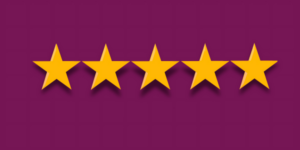
I’m Alicia Butler Pierre and I produced and narrated this episode. Audio editing by Olanrewaju Adeyemo. That German male voiceover you heard earlier was also me. Additional male voiceover by Clarence Levy III. Music production and original score by Sabor! Music Enterprises. Video editing by Gladiola Films. Show notes by Hashim Tale.
You’ve been listening to Scale Tales, a podcast by Equilibria, Inc.








